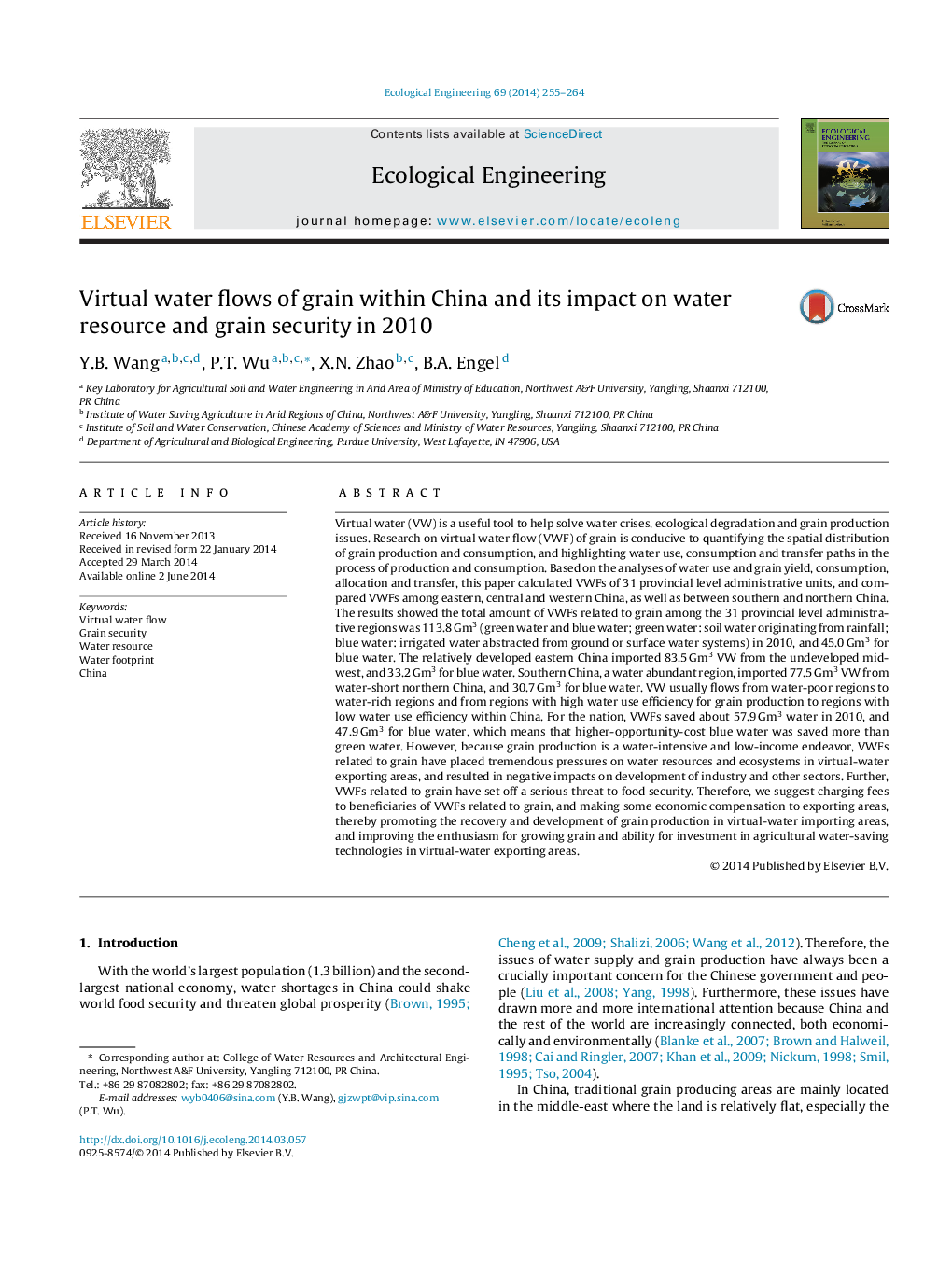| کد مقاله | کد نشریه | سال انتشار | مقاله انگلیسی | نسخه تمام متن |
|---|---|---|---|---|
| 4389401 | 1618030 | 2014 | 10 صفحه PDF | دانلود رایگان |
• Virtual water usually flows from water-poor regions to water-rich regions in China.
• Virtual water usually flows from higher water-use-efficiency regions to the lowers.
• Virtual water flows have put pressures on water resources in exporting areas.
• We suggest charging fees to beneficiaries of VWFs related to grain.
Virtual water (VW) is a useful tool to help solve water crises, ecological degradation and grain production issues. Research on virtual water flow (VWF) of grain is conducive to quantifying the spatial distribution of grain production and consumption, and highlighting water use, consumption and transfer paths in the process of production and consumption. Based on the analyses of water use and grain yield, consumption, allocation and transfer, this paper calculated VWFs of 31 provincial level administrative units, and compared VWFs among eastern, central and western China, as well as between southern and northern China. The results showed the total amount of VWFs related to grain among the 31 provincial level administrative regions was 113.8 Gm3 (green water and blue water; green water: soil water originating from rainfall; blue water: irrigated water abstracted from ground or surface water systems) in 2010, and 45.0 Gm3 for blue water. The relatively developed eastern China imported 83.5 Gm3 VW from the undeveloped mid-west, and 33.2 Gm3 for blue water. Southern China, a water abundant region, imported 77.5 Gm3 VW from water-short northern China, and 30.7 Gm3 for blue water. VW usually flows from water-poor regions to water-rich regions and from regions with high water use efficiency for grain production to regions with low water use efficiency within China. For the nation, VWFs saved about 57.9 Gm3 water in 2010, and 47.9 Gm3 for blue water, which means that higher-opportunity-cost blue water was saved more than green water. However, because grain production is a water-intensive and low-income endeavor, VWFs related to grain have placed tremendous pressures on water resources and ecosystems in virtual-water exporting areas, and resulted in negative impacts on development of industry and other sectors. Further, VWFs related to grain have set off a serious threat to food security. Therefore, we suggest charging fees to beneficiaries of VWFs related to grain, and making some economic compensation to exporting areas, thereby promoting the recovery and development of grain production in virtual-water importing areas, and improving the enthusiasm for growing grain and ability for investment in agricultural water-saving technologies in virtual-water exporting areas.
Journal: Ecological Engineering - Volume 69, August 2014, Pages 255–264
